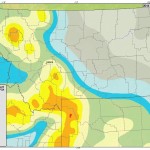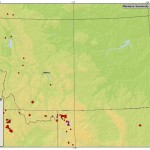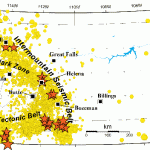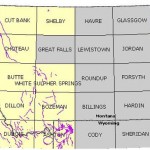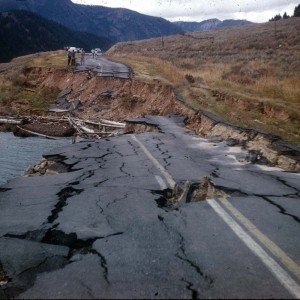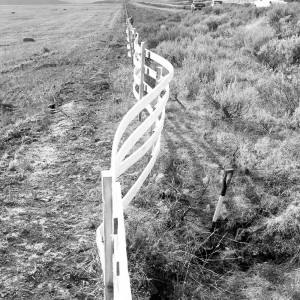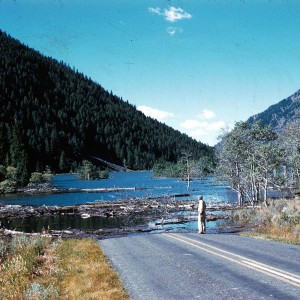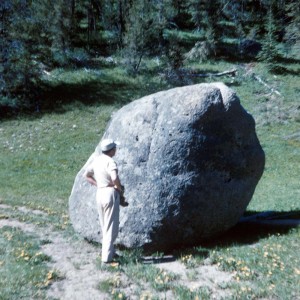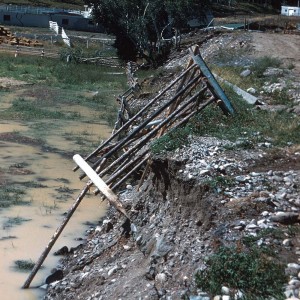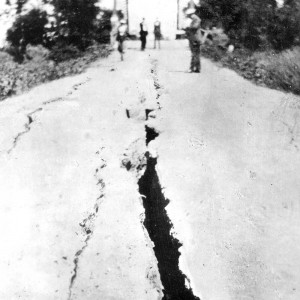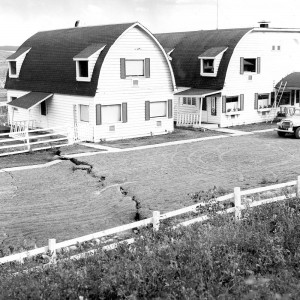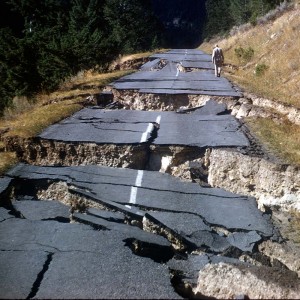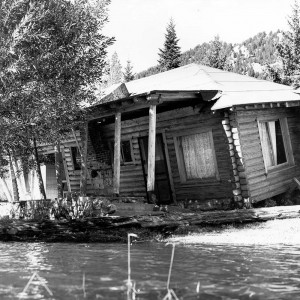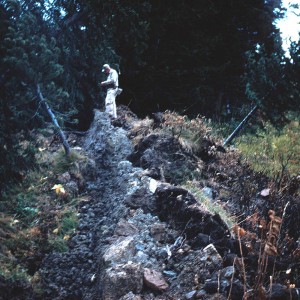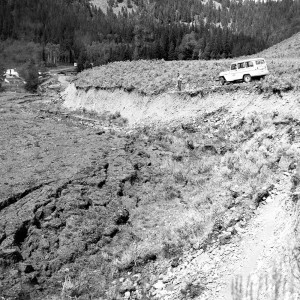Gallatin County, with the Intermountain Seismic Belt running through the middle, is historically very prone to earthquakes. In fact Montana has 7-10 earthquakes occur each day making it the fourth most seismically active state. The 14th largest earthquake in the contiguous United States occurred in 1959 at Hebgen Lake. The Hebgen Lake Earthquake measured Magnitude 7.5, killed 28 people, displaced 80 Million tons of rock, and caused over 11 Million dollars in damage.
Yellowstone National Park is one of the largest volcanic systems in the world. The formation of Yellowstone is the result of several large eruptions, each forming components that make up the park today. Activity in this volcanic system results in several thousand earthquakes each year in the park. In 1975 a 6.1 earthquake occurred in Norris Geyser Basin.
Between the active faults, and volcanic systems, the region around Gallatin County is very prone to earthquakes.
Montana Seismic Maps
- 1959 Hebgen Earthquake
- HWY 287, 1959 Hebgen Earthquake
- 1959 Hebgen Earthquake
What if an Earthquake Occurs?
- Drop, Cover and Hold
- Be alert for items that can fall, and be alert for aftershocks
- Follow your Family Emergency Plan
Learn about creating a Family Emergency Plan!
Family Emergency Plan
When you create your Family Emergency Plan you will identify the items that you and your family will need to be self sufficient. These are the items that you need to survive on your own for a minimum of 72 hours (think food, water, medicine, animal needs, etc…). Remember that the stores likely won’t be open, so you need to keep a reserve to meet your needs.
What Can I Do To Minimize the Damage From an Earthquake?
Many simple and inexpensive tasks can be done to become ready. First, every family should have a plan. Next you should identify your emergency supplies. Many family possessions can be saved by properly securing them. Your house can also be strengthened with some minor retrofits outlined by the videos to the right and flyers below.
Yellowstone’s Future
Is an eruption at Yellowstone overdue? No. First of all, one cannot present recurrence intervals based on only two values. It would be statistically meaningless. But for those who insist… let’s do the arithmetic. The three eruptions occurred 2.1 million, 1.3 million and 0.64 million years ago. The two intervals are thus 0.8 and 0.66 million years, averaging to a 0.73 million-year interval. Again, the last eruption was 0.64 million years ago, implying that we are still about 90,000 years away from the time when we might consider calling Yellowstone overdue for another caldera- forming eruption. Nevertheless, we cannot discount the possibility of another such eruption occurring some time in the future, given Yellowstone’s volcanic history and the continued presence of magma beneath the Yellowstone caldera.
Current Seismic Information
Earthquake Preparedness Materials


